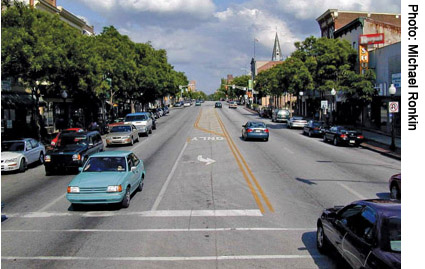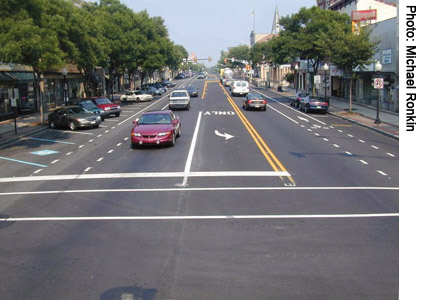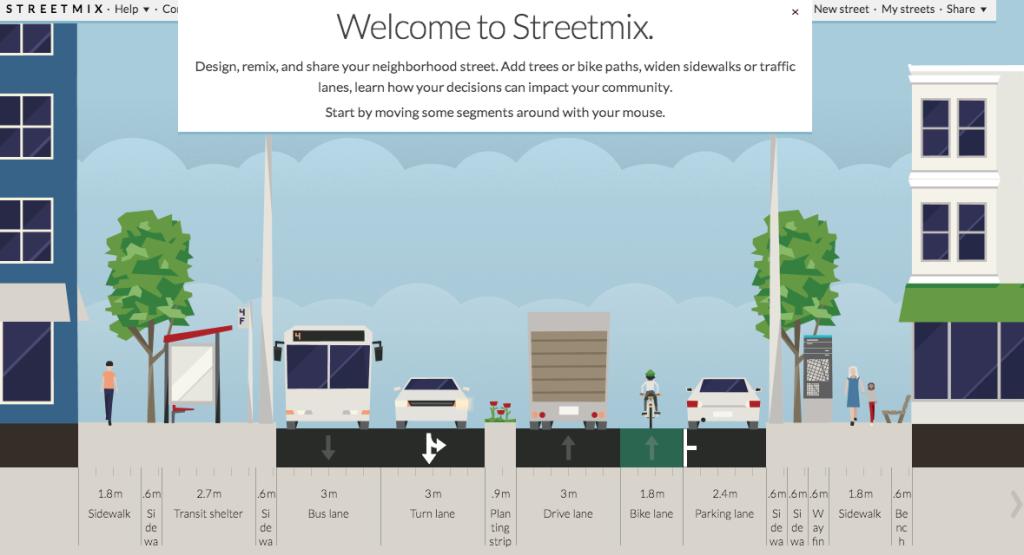
Street designs should actively enhance the ability of a main street to fulfill its economic and cultural roles within a community.
Catering to fast-moving regional traffic degrades the main street experience for those who spend their time and money in the community.
This post is a census of street design on Oklahoma main streets. Street design in Oklahoma typically emphasizes the through-traffic function with wide and numerous lanes, allowing for fast movement in automobiles through town centers. Catering to fast-moving regional traffic degrades the main street experience for those who spend their time and money in the community.
Right-of-Way Width Across Oklahoma
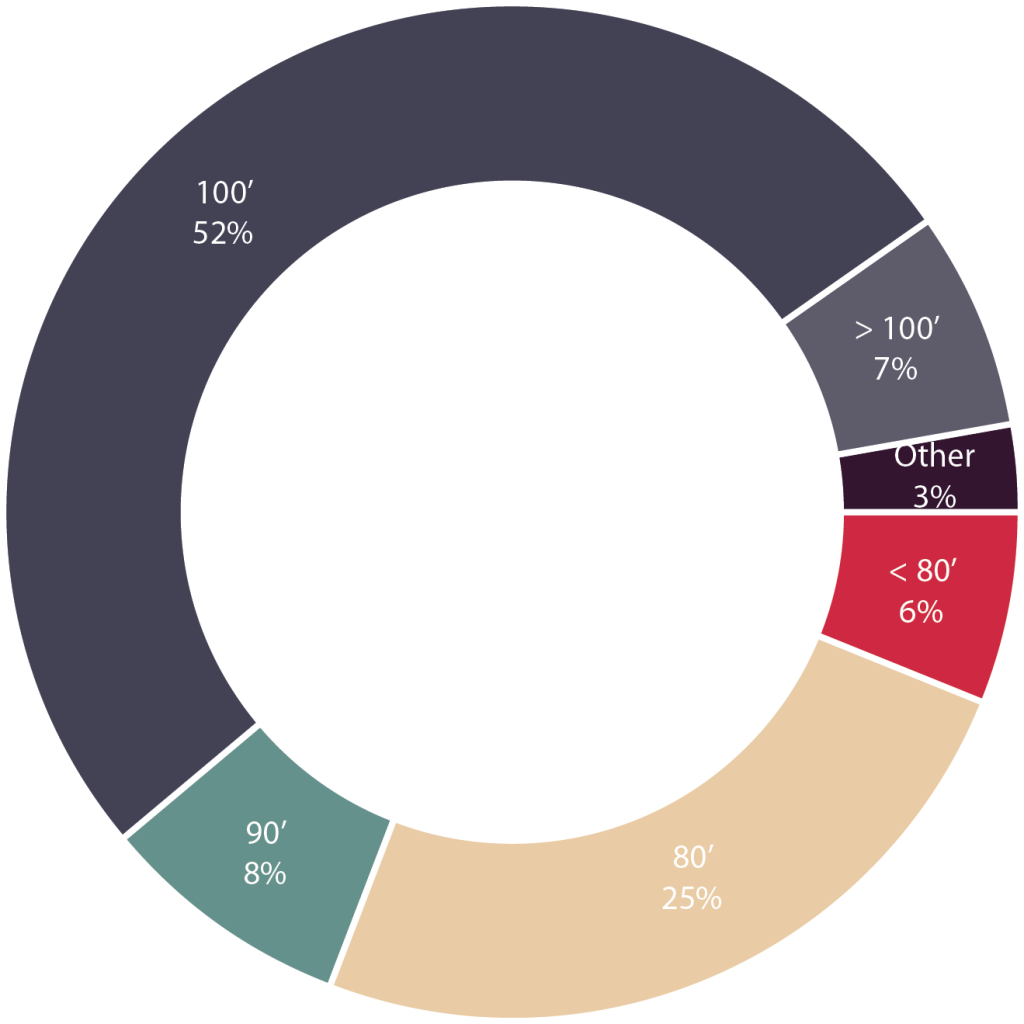 The right-of-way is measured from building face to building face when the buildings are built to the property line. Rights-of-way in Oklahoma are generally very wide compared to many urban retail streets. Retail is often associated with narrower streets, allowing window-shopping on both sides of the street at once.
The right-of-way is measured from building face to building face when the buildings are built to the property line. Rights-of-way in Oklahoma are generally very wide compared to many urban retail streets. Retail is often associated with narrower streets, allowing window-shopping on both sides of the street at once.
[pullquote position=”right”]Rights-of-way in Oklahoma are generally very wide compared to many urban retail streets.[/pullquote]More than three quarters of main streets in Oklahoma are either 100′ or 80′ wide. The wide rights-of-way found on most of Oklahoma’s main streets offer both opportunities and challenges. The space allows for accommodation of street elements to accommodate many functions, but it is typically used to accommodate larger roadways.
Chart based on data from 120 main streets in Oklahoma.
The Geography of Right-of-Way Width

[pullquote position=”right”]Rights-of-way in Oklahoma are generally very wide compared to many urban retail streets.[/pullquote]More than three quarters of main streets in Oklahoma are either 100′ or 80′ wide. The wide rights-of-way found on most of Oklahoma’s main streets offer both opportunities and challenges. The space allows for accommodation of street elements to accommodate many functions, but it is typically used to accommodate larger roadways.
Chart based on data from 120 main streets in Oklahoma.
Older communities in the eastern part of the state, formerly Indian Territory, are more likely to have rights-of-way under 100’. Western and central regions, formerly Oklahoma Territory and the Unassigned Lands, are more likely to have 100’ or greater rights-of-way.
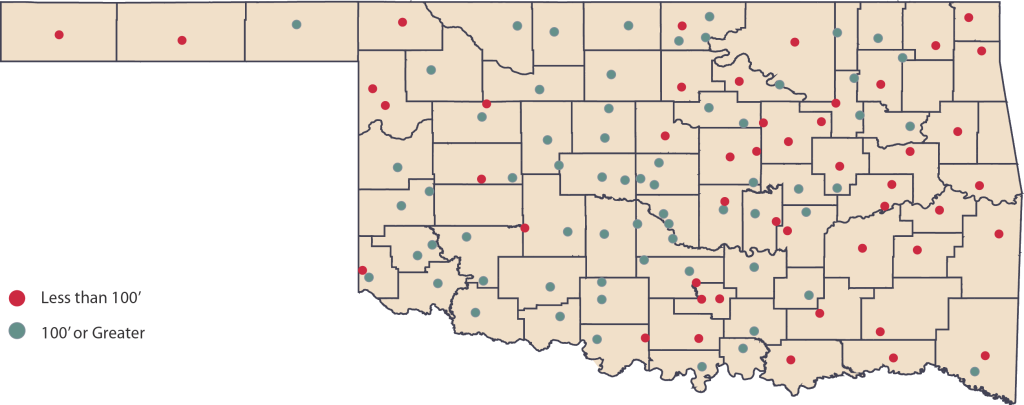
Number of Lanes

Main streets must accommodate traffic, and many in Oklahoma serve as part of the state highway system. This is a challenging balancing act for main streets.
The majority of Oklahoma main streets, or 78%, have two lanes of traffic. Another 20% have four lanes. The remaining streets have other configurations. For example, Norman and Ardmore have three lanes of one-way traffic on their main streets and Bethany has a six-lane divided highway through its historic downtown.
Chart based on data from 120 main streets in Oklahoma.
Width of Lanes
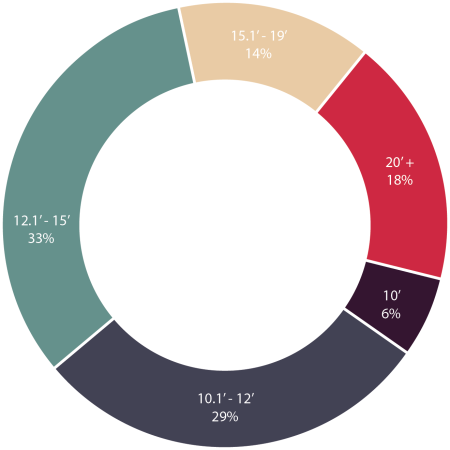
Lanes are typically seriously oversized in Oklahoma towns. A normal range of lane widths for urban commercial streets is between 10’ and 12’. 12′ lanes are appropriate for consideration on streets with heavy bus or truck traffic. Only 6% of lanes on Oklahoma main streets are 10’, and another 29% is between 10’ and 12’.
The majority of main streets in Oklahoma have oversized lanes. 20’ lane widths (18% of streets) mean that two-lane streets are dedicating space to automobiles that is equivalent to four lanes of traffic.
Wide lane widths translate to longer crossing distances for pedestrians. Wide lanes have also been shown to increase the speed of traffic while narrower lanes can have a traffic calming effect.
Chart based on data from 49 main streets in Oklahoma.
Parking Lanes
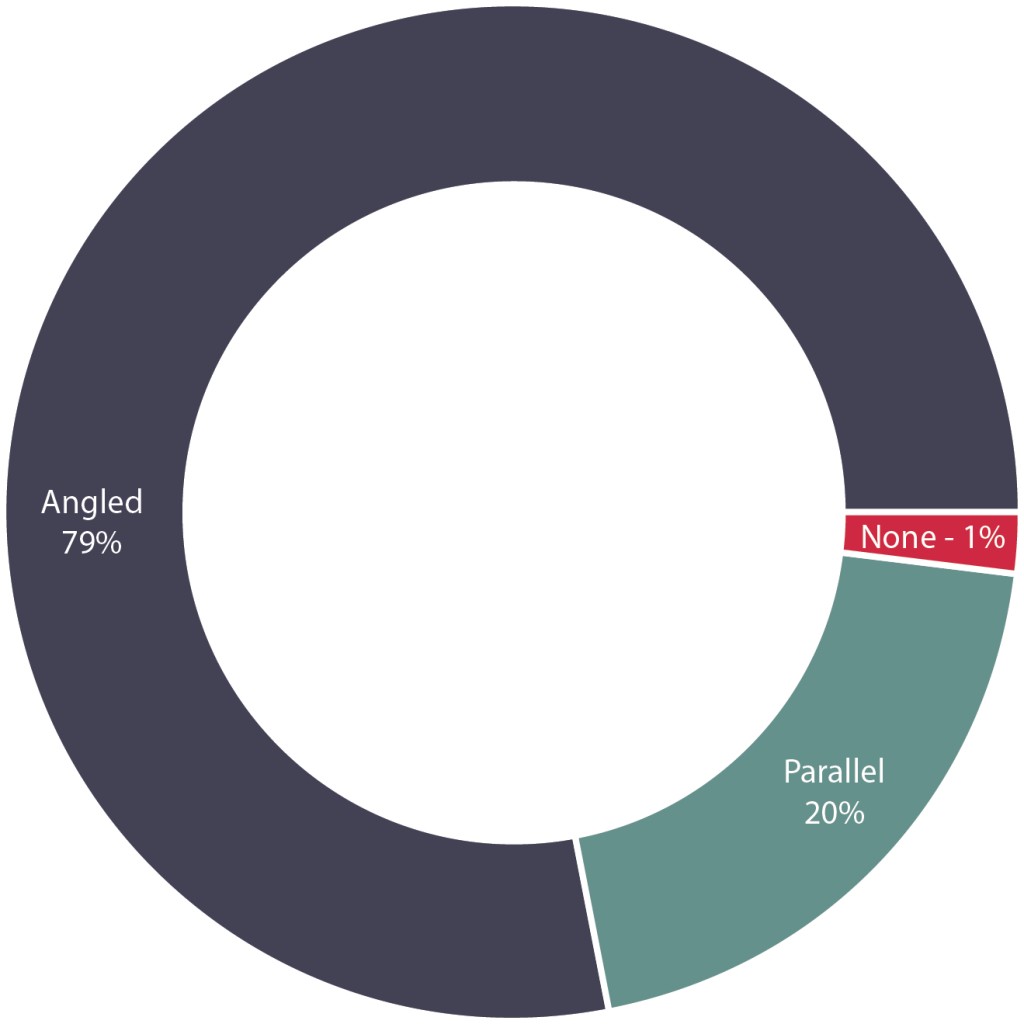
Towns in Oklahoma understand the benefits of providing on-street parking to customers. 79% of towns provide angled parking and 20% provide parallel parking. Angled parking is the configuration that provides the maximum number of parking spaces.
Only one town in the study, Seiling, did not have parking. It has two additional traffic lanes instead of parking. Geary and Purcell have added an additional row of angled parking as a median between travel lanes.
Chart based on data from 120 main streets in Oklahoma.
Visualizing Street Designs
A range of street designs are used across Oklahoma, but there are several typical designs that are applied based on the right-of-way. Larger right-of-way does not typically equate to larger pedestrian space. For example, Tulsa’s Main Street has the widest sidewalks (20′) with only an 80′ right-of-way. This graph illustrates trade-offs that communities have made for additional parking, more lanes, or wider sidewalks.
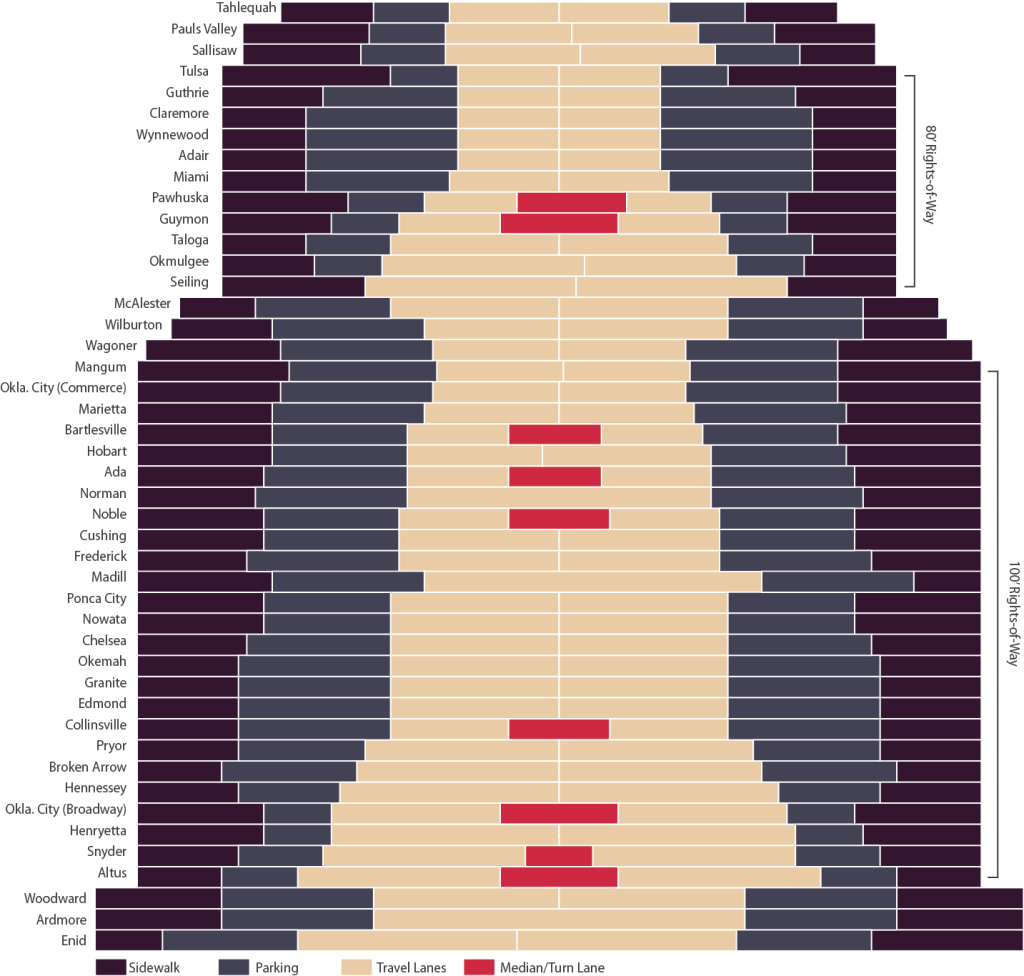
Street Design and Traffic Counts
An additional lane primarily benefits users who are simply passing through a town rather than customers who are stopping to spend money.
There may be opportunities to reduce the number of lanes on many main streets.
In a main street setting, other factors are more critical than traffic count. Wide sidewalks, street trees, calm traffic, quiet atmosphere, safe crossings, and parking become very important for successful economic development on a main street. An additional lane comes at the cost of allowing less space for these important elements to make main street thrive. This April 2012 post» looked at how three different central Oklahoma main streets divided up 100′ of right-of-way.
An additional lane primarily benefits users who are simply passing through a town. Additional sidewalk space, or providing more parking with angled instead of parallel parking, benefits business owners and customers who are stopping to spend money in the town.
Cars Per Day
The chart shows that many of the busiest streets have only two lanes, while some of the least busy streets have four lanes.
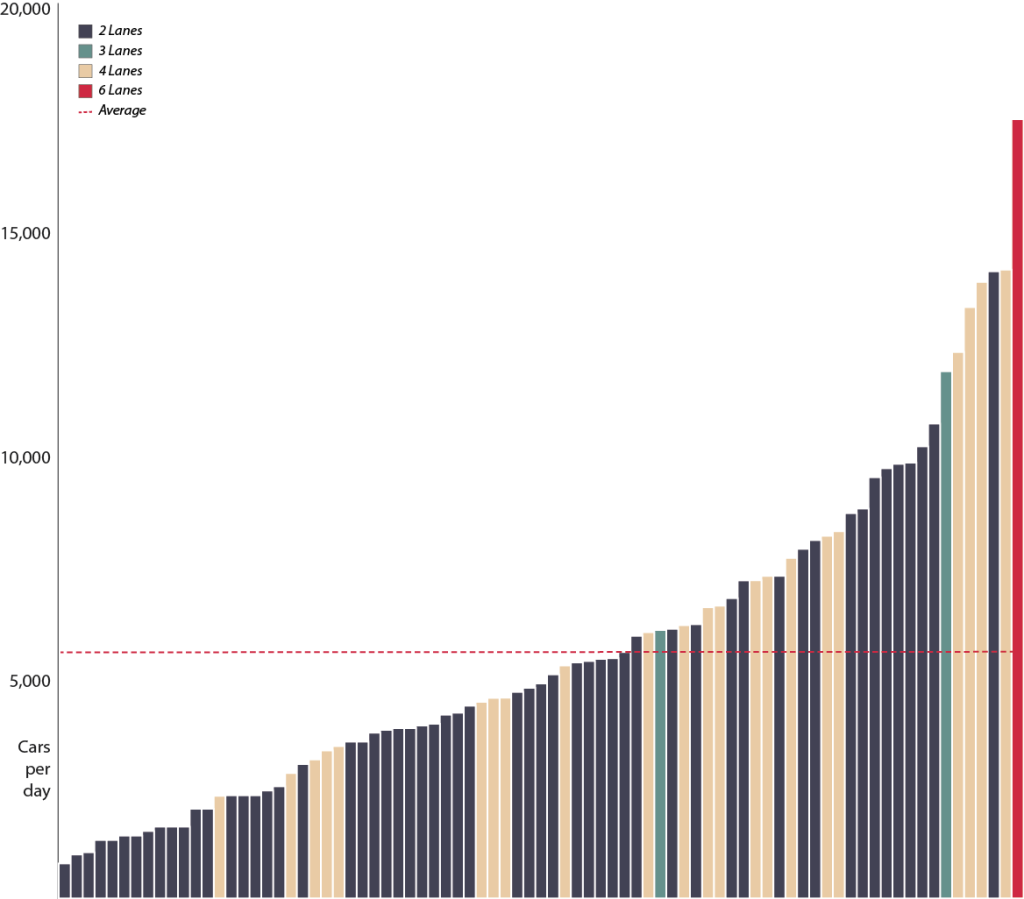
Cars Per Lane
Durant’s two-lane Main Street, which also serves as US Highway 70, carries 7,000 cars per lane per day. Enid’s four-lane Randolph Avenue, which also serves as US Highway 64, carries only 570 cars per lane per day.
Most four-lane streets are underperforming by this measure compared to two-lane streets.
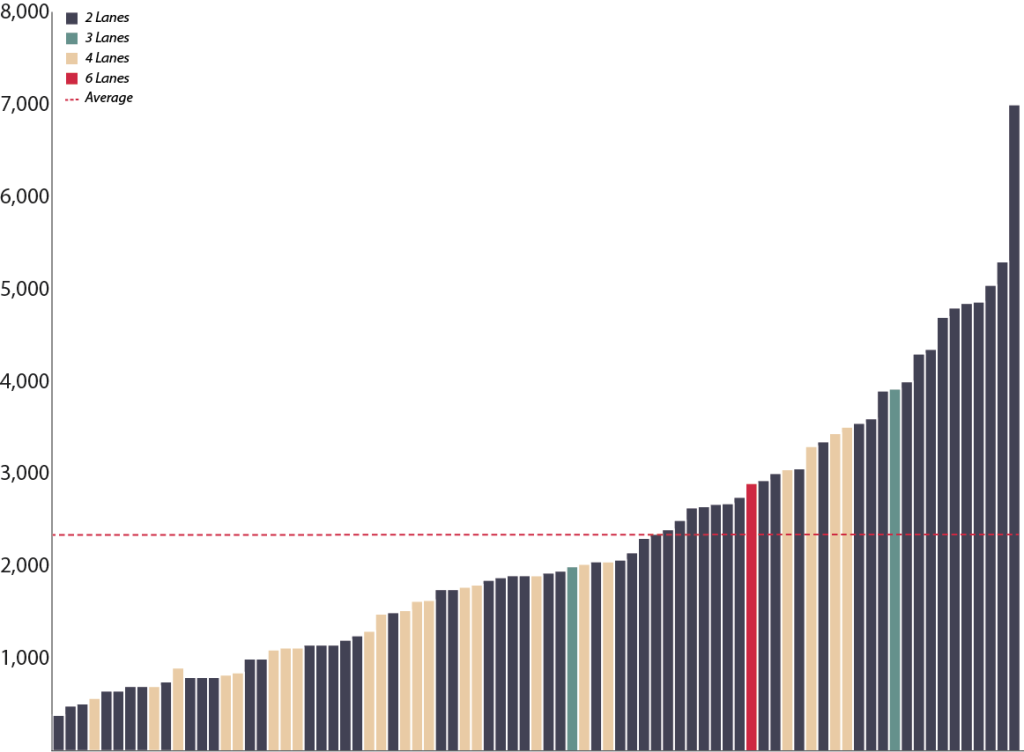
Road Diets
[pullquote position=”right”]Every Oklahoma main street falls below 20,000 cars per day, and may be a candidate for a road diet.[/pullquote]According to the Federal Highway Administration, “Roadways with Average Daily Traffic (ADT) of 20,000 or less may be good candidates for a road diet and should be evaluated for feasibility.” Every Oklahoma main street falls below 20,000 cars per day, and may be a candidate for a road diet.
Road diets can improve safety for all users of the street, reduce crashes, and lower the speed of traffic on the street.
Is it worth it to trade a lane or two of traffic and cause cars to flow more slowly along our most treasured, unique, and interesting streets?
Try your hand at street design.
Want to try your hand at designing your dream main street?
Streetmix.net is an online tool that lets you do just that. Try designing 100′ or 80′ main streets- More than 75% of Oklahoma main streets are either 80′ or 100′ wide- and share them with us via Facebook or Twitter.

